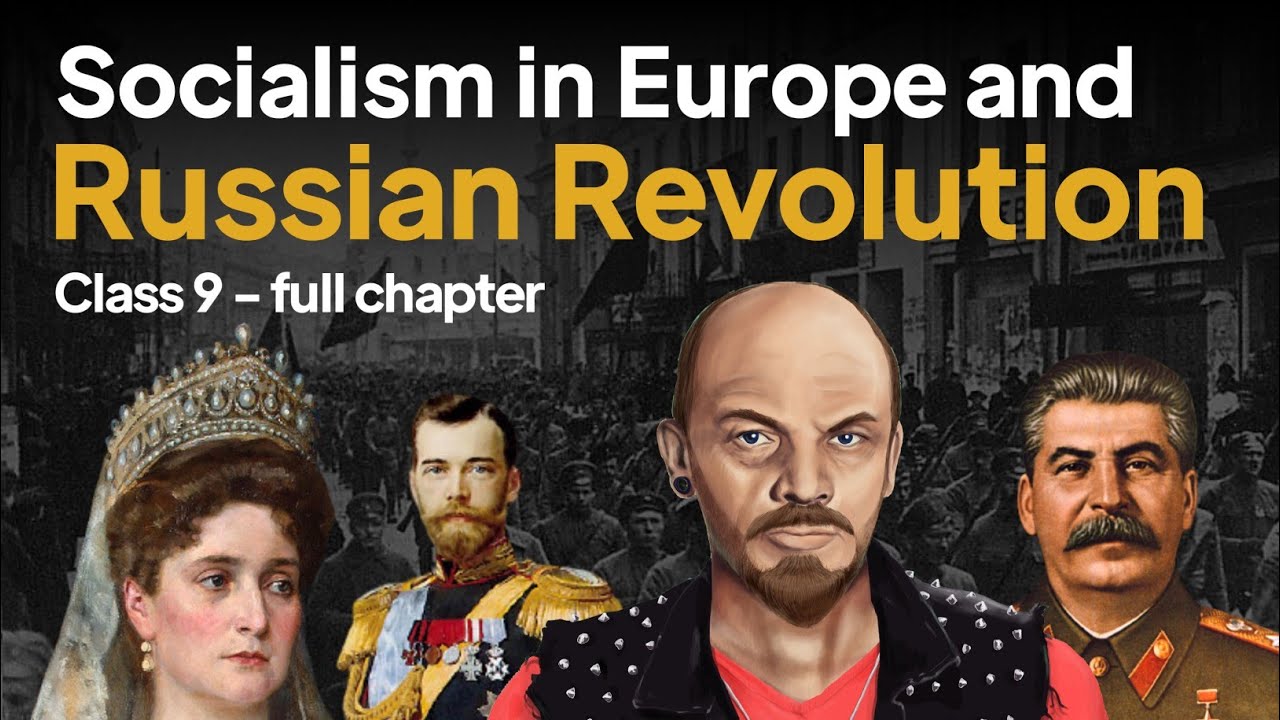Sejarah Revolusi Rusia Runtuhnya Kekuasaan Tsar
Summary
TLDRThe video discusses the Russian Revolution, detailing its causes, key events, and global implications. It highlights the authoritarian rule of Tsar Nicholas II, the rise of discontent among workers and peasants, and the split of the Social Democratic Party into Mensheviks and Bolsheviks. Significant events like Bloody Sunday and the two phases of the revolution—February and October 1917—are covered, leading to the establishment of a communist regime under Lenin and the eventual rise of Stalin. The impact of the revolution on the spread of communism worldwide, including in Indonesia, is emphasized, encouraging viewers to engage with history.
Takeaways
- 😀 The Russian Revolution was significantly influenced by the authoritarian rule of Tsar Nicholas II.
- 😀 Discontent among workers, peasants, and soldiers led to the formation of the Social Democratic Party (SDP) in 1898.
- 😀 The SDP split into two factions in 1903: the Bolsheviks and the Mensheviks.
- 😀 The Bloody Sunday massacre in 1905, where about 1,000 protesters were killed, intensified public dissatisfaction.
- 😀 The February Revolution in 1917 forced Tsar Nicholas II to abdicate, leading to a temporary liberal government.
- 😀 Alexander Kerensky led the interim government, which faced criticism for its inability to address the people's needs.
- 😀 The October Revolution of 1917 saw the Bolsheviks, under Vladimir Lenin, successfully overthrowing Kerensky's government.
- 😀 The execution of Tsar Nicholas II and his family in July 1918 marked a significant turning point in Russian history.
- 😀 The establishment of the Soviet Union in 1922 marked the rise of communism as a major political ideology.
- 😀 The Russian Revolution influenced communist movements worldwide, including the establishment of the Indonesian Communist Party (PKI).
Q & A
What were the main causes of the Russian Revolution?
-The Russian Revolution was primarily caused by the authoritarian rule of Tsar Nicholas II, social inequality, dissatisfaction among workers, peasants, and soldiers, and the impact of Russia's involvement in World War I.
What significant event is known as Bloody Sunday?
-Bloody Sunday refers to the incident on January 22, 1905, when peaceful protesters demanding justice were fired upon by security forces, resulting in the deaths of approximately 1,000 people. This event fueled public outrage against the tsarist regime.
What were the two factions of the Social Democratic Party, and who led them?
-The Social Democratic Party split into two factions in 1903: the Mensheviks, led by George Plekhanov and Alexander Kerensky, and the Bolsheviks, led by Vladimir Lenin, Leon Trotsky, and Joseph Stalin.
What was the outcome of the February Revolution of 1917?
-The February Revolution resulted in the abdication of Tsar Nicholas II and the establishment of a provisional government led by Alexander Kerensky.
What triggered the October Revolution of 1917?
-The October Revolution was triggered by dissatisfaction with the provisional government, particularly its slow progress in addressing the needs of the Russian people and the ongoing hardships of World War I.
What happened to Tsar Nicholas II and his family?
-Tsar Nicholas II and his family were executed by Bolshevik forces on July 7, 1918, marking a significant moment in the transition to a communist state.
How did the Russian Revolution influence the formation of the Soviet Union?
-The Russian Revolution led to the establishment of a communist regime, culminating in the formation of the Soviet Union on August 30, 1922, under Lenin's leadership.
Who succeeded Lenin as the leader of the Soviet Union, and what was one of his major policies?
-Joseph Stalin succeeded Lenin as the leader of the Soviet Union and implemented a policy of 'iron curtain' politics, leading to the establishment of several Eastern European nations as communist states.
In what ways did the Russian Revolution spread communist ideology internationally?
-The Russian Revolution inspired communist movements globally, notably in countries like China and Vietnam, and introduced communist ideas to Indonesia through the establishment of the Indonesian Communist Party (PKI).
Who introduced communism to Indonesia, and what was the name of the party formed?
-Communism was introduced to Indonesia by Dutch national Henk Sneevliet, who established the Indonesian Social Democratic Association (ISDV), which later transformed into the Indonesian Communist Party (PKI).
Outlines

This section is available to paid users only. Please upgrade to access this part.
Upgrade NowMindmap

This section is available to paid users only. Please upgrade to access this part.
Upgrade NowKeywords

This section is available to paid users only. Please upgrade to access this part.
Upgrade NowHighlights

This section is available to paid users only. Please upgrade to access this part.
Upgrade NowTranscripts

This section is available to paid users only. Please upgrade to access this part.
Upgrade NowBrowse More Related Video

REVOLUSI RUSIA - Lahirnya Kaum Proletariat [Materi Sejarah Peminatan Kelas XI MA/SMA]

Socialism in Europe and The Russian Revolution Class 9 | Class 9 History Chapter 2 | CBSE | NCERT

Revolusi Perancis: Saat Kemarahan Rakyat Menggulingkan Tirani

POWER Shifts After 1900 [AP World History] Unit 7 Topic 1 (7.1)

REVOLUSI PERANCIS - Runtuhnya Monarki Absolut Perancis [Materi Sejarah Kelas XI Peminatan SMA/MA]

La REVOLUCION RUSA en 12 MINUTOS (ft. El Mapa de Sebas)
5.0 / 5 (0 votes)